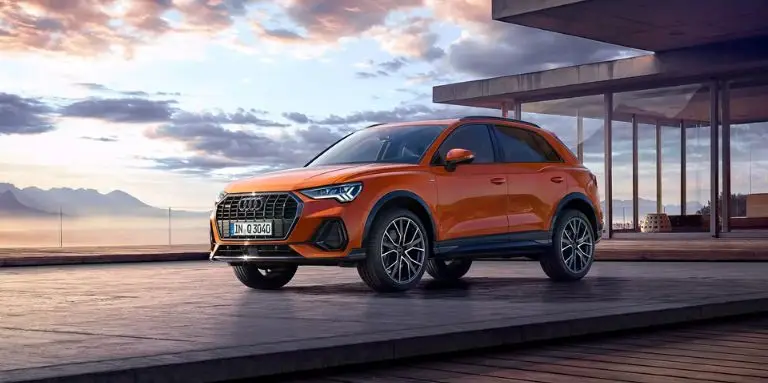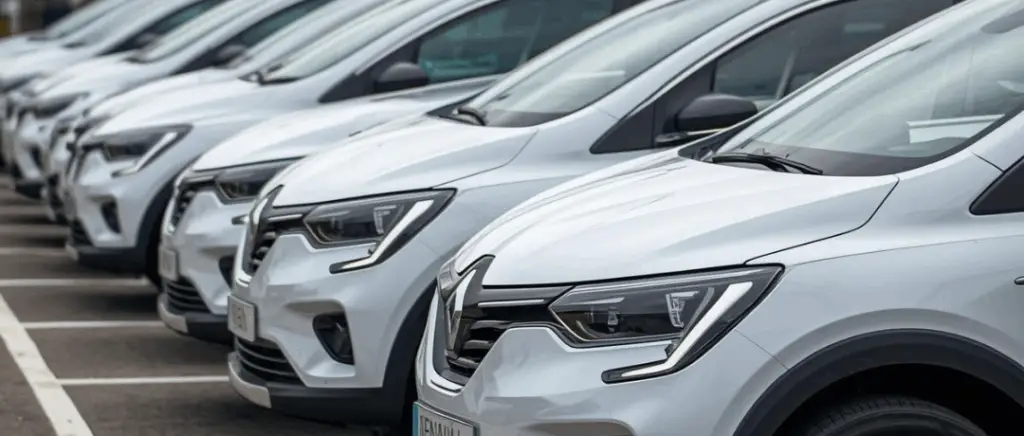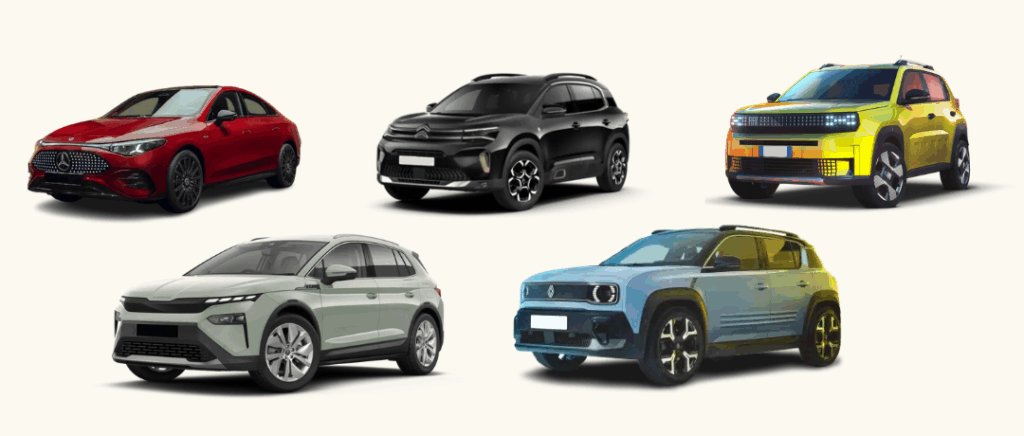New Audi Q3 SUV: what does the plug-in hybrid version offer?
Powertrain and performance: how good is the Q3 PHEV with its 245 bhp?
The Q3 plug-in hybrid (PHEV) fromAudiThe 45 TFSI e offers a combined output of 245 bhp (180 kW) and 400 Nm of torque, thanks to the combination of a 150 bhp 1.4 TFSI petrol engine and a 116 bhp electric motor. Controlled by a six-speed S tronic automatic gearbox, it accelerates from 0 to 100 km/h in 7.3 seconds and has a top speed of 210 km/h.
This model is based on the Volkswagen Group's MQB platform, a proven architecture that ensures rigidity, lightness and good integration of hybrid components, while facilitating battery and engine management. The driving experience is fluid and linear, with muscular acceleration that can be appreciated in everyday driving, even if sportiness is not at the heart of the experience. This level of performance places the Q3 PHEV in the upper mid-range of compact hybrid SUVs, while offering a pleasing versatility between fuel efficiency and dynamism.
Autonomy electric: how far can you drive a 100 % electric car?
The electric range of the Q3 plug-in hybrid depends on the generation in question. For the model currently on the market (previous generation), the battery The 13 kWh engine delivers between 50 and 51 km of all-electric driving according to the WLTP cycle, which covers the majority of daily urban journeys. The 100 % electric mode operates at speeds of up to 140 km/h.
For the new generation, to be launched in autumn 2024 and available to order during 2025, electric range will rise to 119-120 km (WLTP) thanks to a 25.7 kWh battery, doubling the capacity of the previous version. This major development means that longer journeys can now be envisaged without recourse to the internal combustion engine.
Exterior design: does the Q3 change with its electrified powertrain?
The plug-in hybrid version of the Q3 does not fundamentally revolutionise the SUV's visual identity, but it does take full advantage of the latest styling developments in the range. The design of the New Audi Q3 e-hybrid is characterised by an athletic silhouette, taut surfaces and balanced proportions that accentuate its presence on the road. The widened, honeycomb-structured single-frame grille frames the sharp headlamps, underlining the model's progressive character.
At the rear, a horizontal strip of light links the LED lights, accentuating the vehicle's visual width, while the sculpted volumes of the boot and contrasting bumper reinforce its robust appearance. Stylish finishes, such as up to 20-inch wheels and geometric patterns, highlight the unique character of this electrified version. Overall, the Q3 Plug-in Hybrid retains a strong, sporty identity, while discreetly integrating elements specific to the electrified powertrain.
Audi Q3 interior and technologies: a premium SUV as well equipped as ever?
In the New Audi Q3 e-hybrid, every detail reflects the brand's high standards of perceived quality and design. The cabin offers a large, comfortable and modular space, with refined materials, clean lines and a connected interface contributing to a premium ambience. The driver-focused cockpit perfectly integrates the functions dedicated to electromobility, while remaining intuitive and ergonomic. Panoramic screens, meticulous finishes and a wide range of customisation options create an atmosphere tailored to the needs of each individual user.
Finally, the Q3 Plug-in Hybrid benefits from the latest Audi technologies, such as driver assistance systems, digital Matrix LED lights and advanced connectivity, ensuring a level of equipment that meets the expectations of a premium SUV.
Audi Q3 fuel consumption and recharging: what are the official figures and what are they actually used for?
Official figures for the Q3 Plug-in Hybrid show very low combined fuel consumption, ranging from 1.6 to 2.0 l/100 km in petrol-electric mode, and from 16 to 17.5 kWh/100 km in all-electric mode, according to the WLTP cycle. CO2 emissions are also very low, at between 36 and 46 g/km, making the Q3 hybrid one of the most fuel-efficient compact SUVs on the market. In real-life conditions, fuel consumption may increase slightly depending on driving style, use of equipment (heating, air conditioning) and the profile of the journey.
As for recharging, the 13 kWh lithium-ion battery can be fully recharged in around 3 hours 45 minutes using a home charging point or reinforced socket, with the on-board charger limited to 3.6 kW of power. For the new generation, the 25.7 kWh battery allows rapid DC charging up to 50 kW, reducing the recharge time to 26 minutes and reaching 80% of battery from 10%.
Finishes and equipment: what versions are available for the Q3 hybrid?
With the new generation Audi Q3 plug-in hybrid, the range of trim levels has yet to be officially specified, but it is highly likely that it will follow the tried and tested pattern of the previous generation, i.e. several trim levels for each body style (Q3 or Q3 Sportback). On the outgoing generation, the main versions were Design, S line and Black Edition, each offering an increasing level of equipment in terms of technology, personalisation and driving aids.
The new generation is expected to offer a high level of standard equipment, including modern multimedia systems, advanced driving aids and premium interior finishes. Options such as adaptive suspension, progressive power steering and an adaptive driving assistant are expected to complement this.
Price: how much does the new Audi Q3 plug-in hybrid cost?
The new Audi Q3 plug-in hybrid, with 272 bhp and a claimed electric range of 120 km, will start at €55,000 in Design trim. This price corresponds to the most recent plug-in hybrid version, with a large-capacity battery and an updated powertrain. By way of comparison, the previous generation plug-in hybrid (45 TFSI e) was priced from €46,150 to €50,660 for the classic version, and from €49,150 to €53,660 for the Sportback, depending on the trim level chosen.
Audi Q3: when will it be available?
Sales of the new Audi Q3 plug-in hybrid will begin following the opening of orders, scheduled for June 2025, with the first deliveries announced from mid-September 2025. The combustion and micro-hybrid versions are already available to order, but the most powerful plug-in hybrid version will join the catalogue immediately, with deliveries expected in autumn 2025.
Comparison table: Audi Q3 PHEV versus BMW X1, Mercedes GLA
| Model | Type of motorisation | Combined power | Electric range (WLTP) | Battery (useful) | DC fast recharge | Admission (France) |
|---|---|---|---|---|---|---|
| Audi Q3 PHEV 2025 | Plug-in hybrid | 272 hp | 120 km | 19.7 kWh | Yes (50 kW) | 55 000 € |
| BMW X1 xDrive25e | Plug-in hybrid | 245 hp | 82-88 km | 14.2 kWh | No | 53 000 € |
| Mercedes GLA 250e | Plug-in hybrid | 218 hp | 70-76 km | 15.6 kWh | No | 54 000 € |
An electrified premium SUV under €55,000: good value for money?
An electrified premium SUV under €55,000, like the new Audi Q3 plug-in hybrid (PHEV), offers a particularly attractive price/performance ratio in the premium compact segment. Compared with its main rivals, it boasts superior electric range (up to 120 km WLTP), generous power (272 bhp) and advanced connectivity and assistance technologies, while remaining very close to the price of the BMW X1 or the Mercedes GLA plug-in hybrids.
This positioning offers a high level of equipment, day-to-day electric use for the most part, and premium comfort, all within a controlled budget for the category, making it a relevant choice for discerning buyers who want to combine economy, performance and versatility.
Conclusion
In conclusion, the new Audi Q3 Plug-in Hybrid has established itself as an essential benchmark among electrified premium compact SUVs. It combines first-rate electric range, solid performance and a level of equipment that meets the expectations of the segment, while remaining under the €55,000 mark. In the face of direct rivals such as the BMW X1 xDrive25e and the Mercedes GLA 250e, it stands out for its ability to offer predominantly electric daily use and rapid recharging, meeting the needs of both private customers and businesses looking to modernise their vehicles. vehicle fleet.
Whether it's to take advantage of attractive leasing offers, anticipate the installation of charging points or optimise mobility management, the Q3 PHEV is the perfect embodiment of the transition to premium, efficient, forward-looking mobility.
































